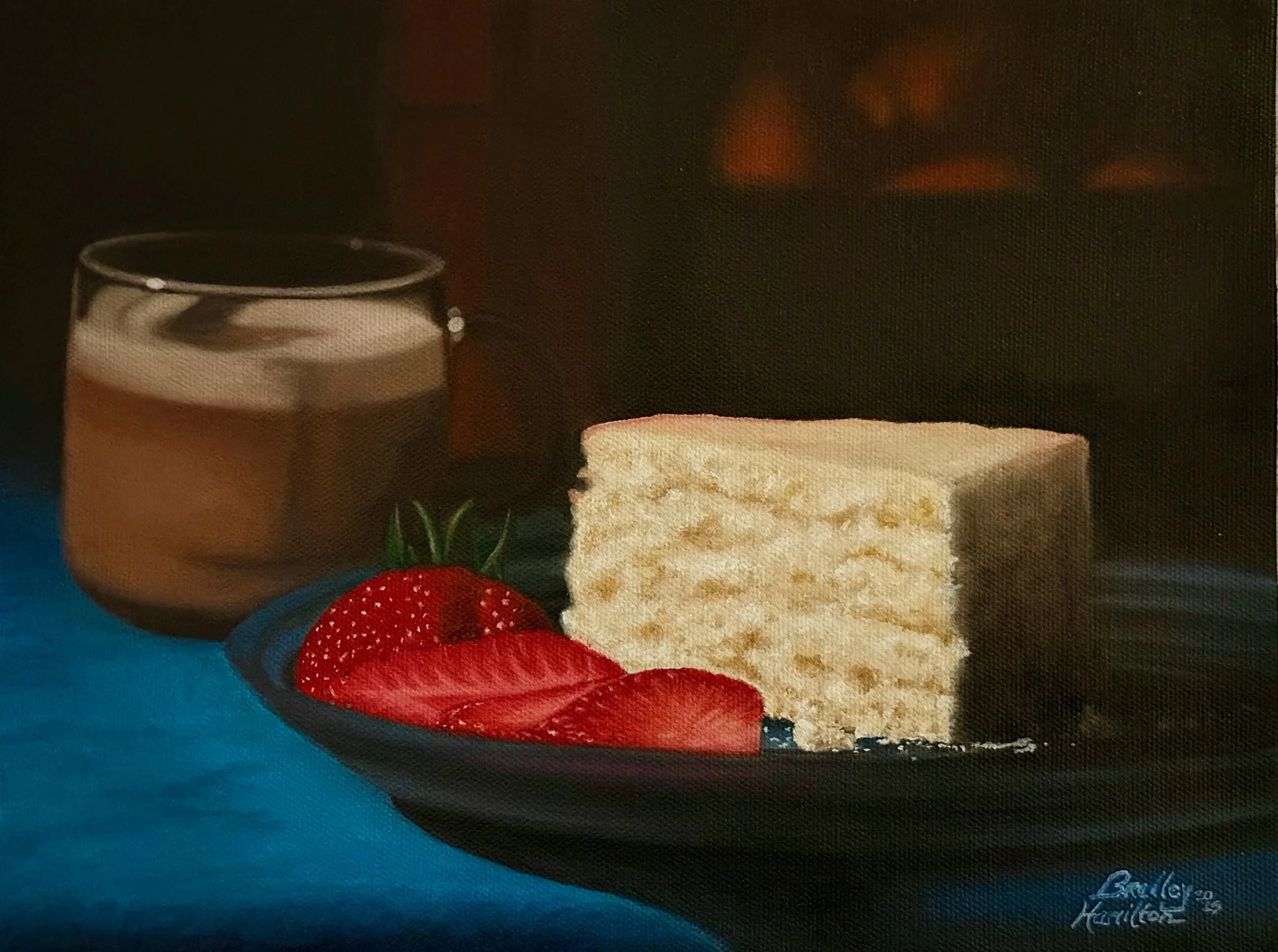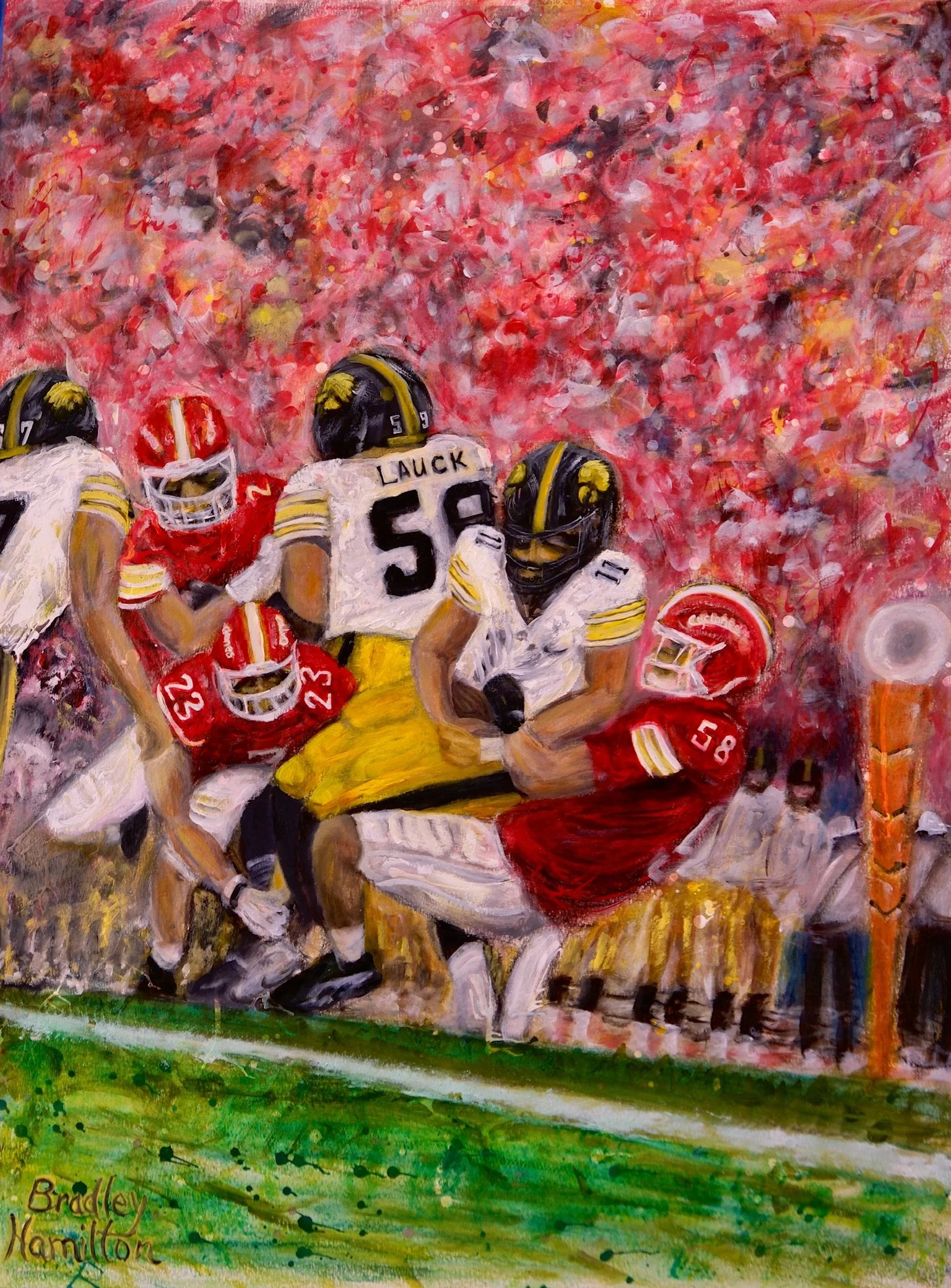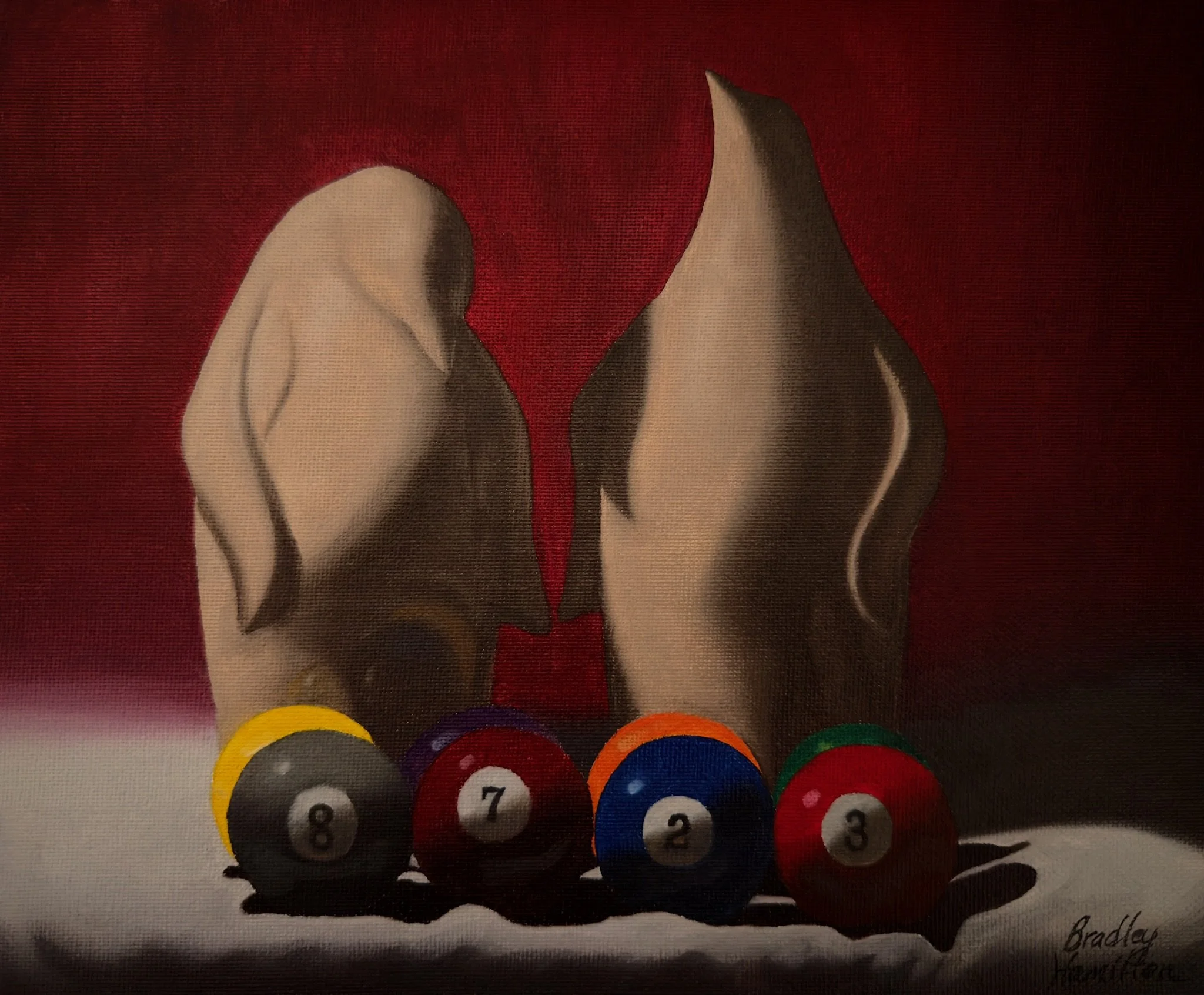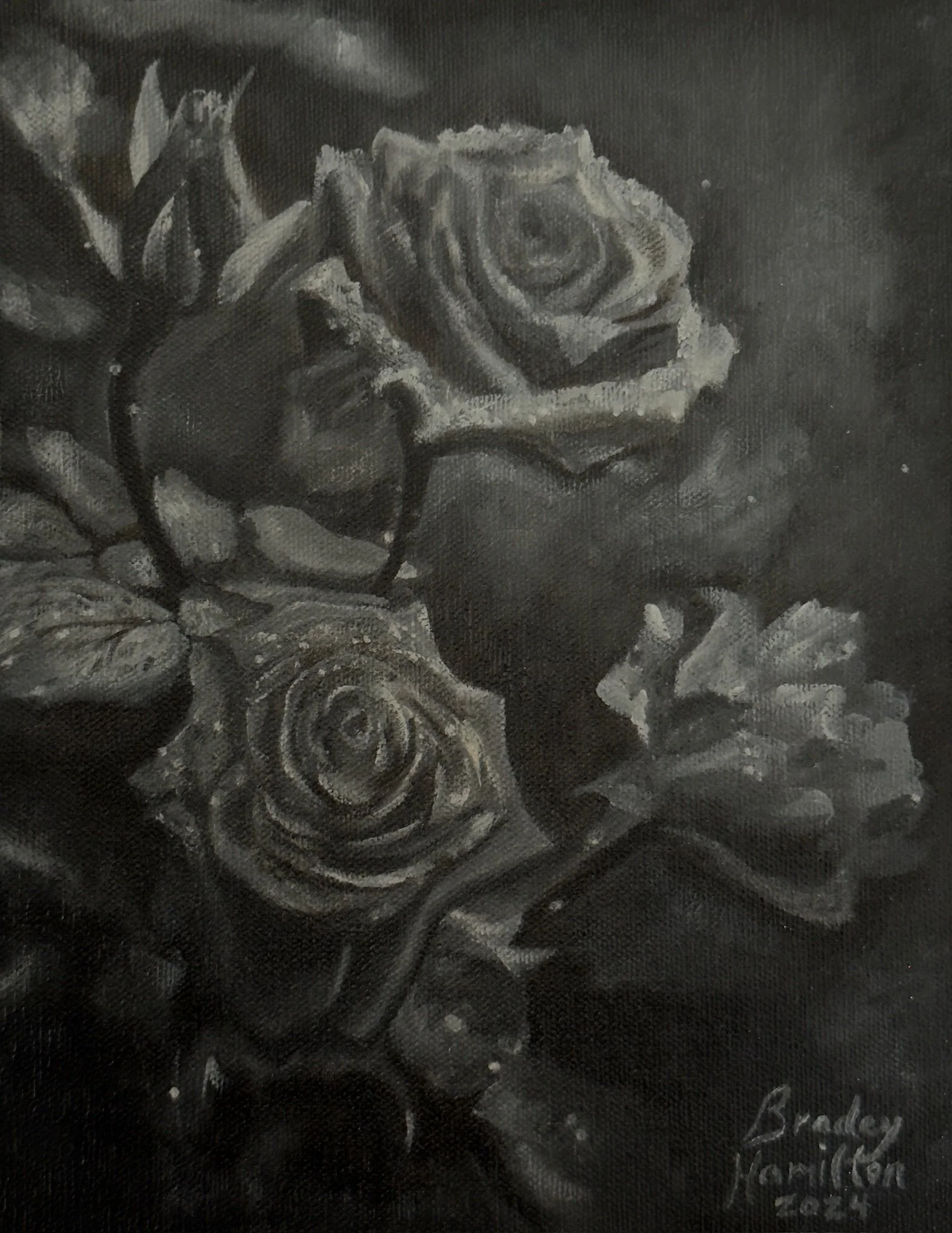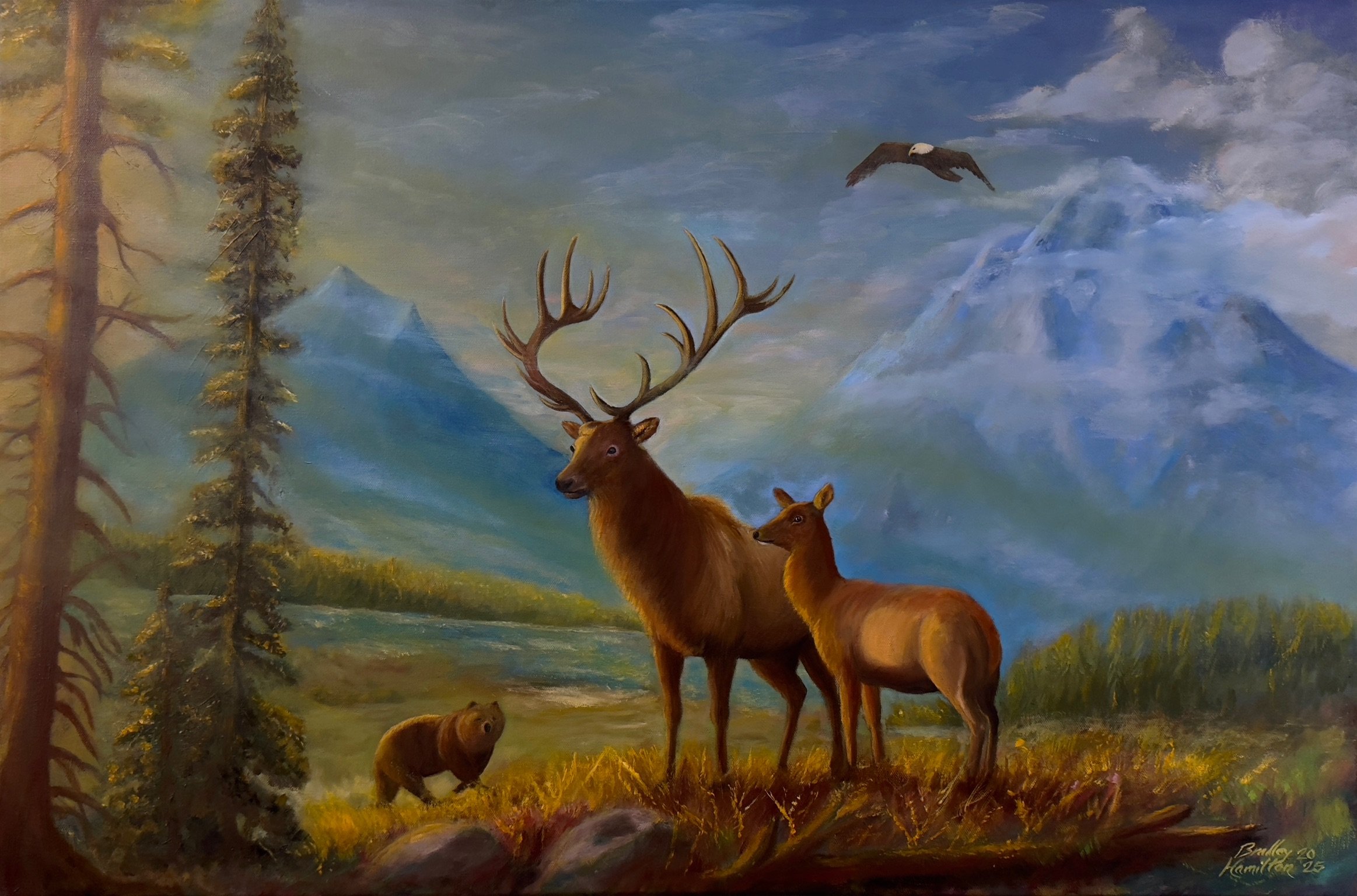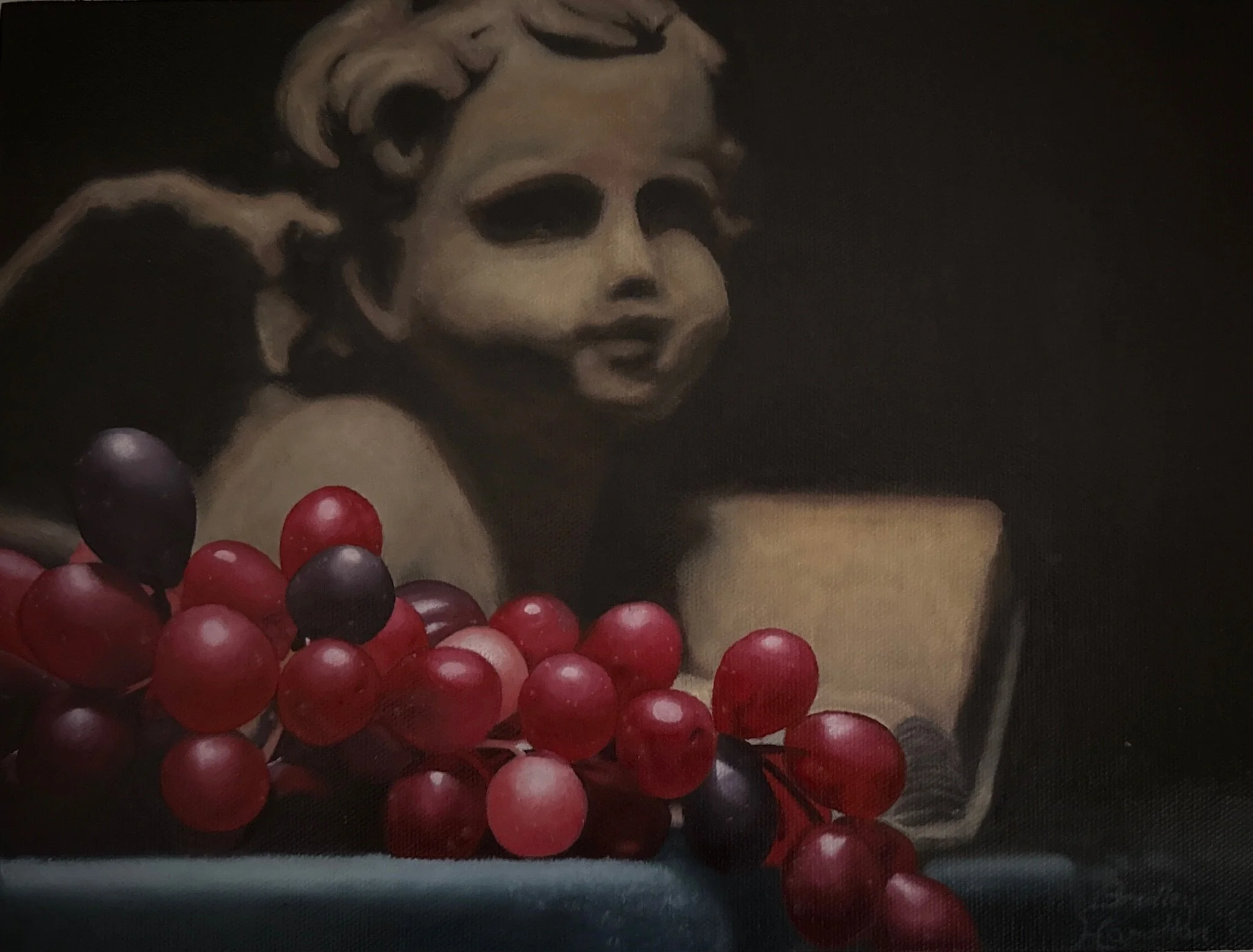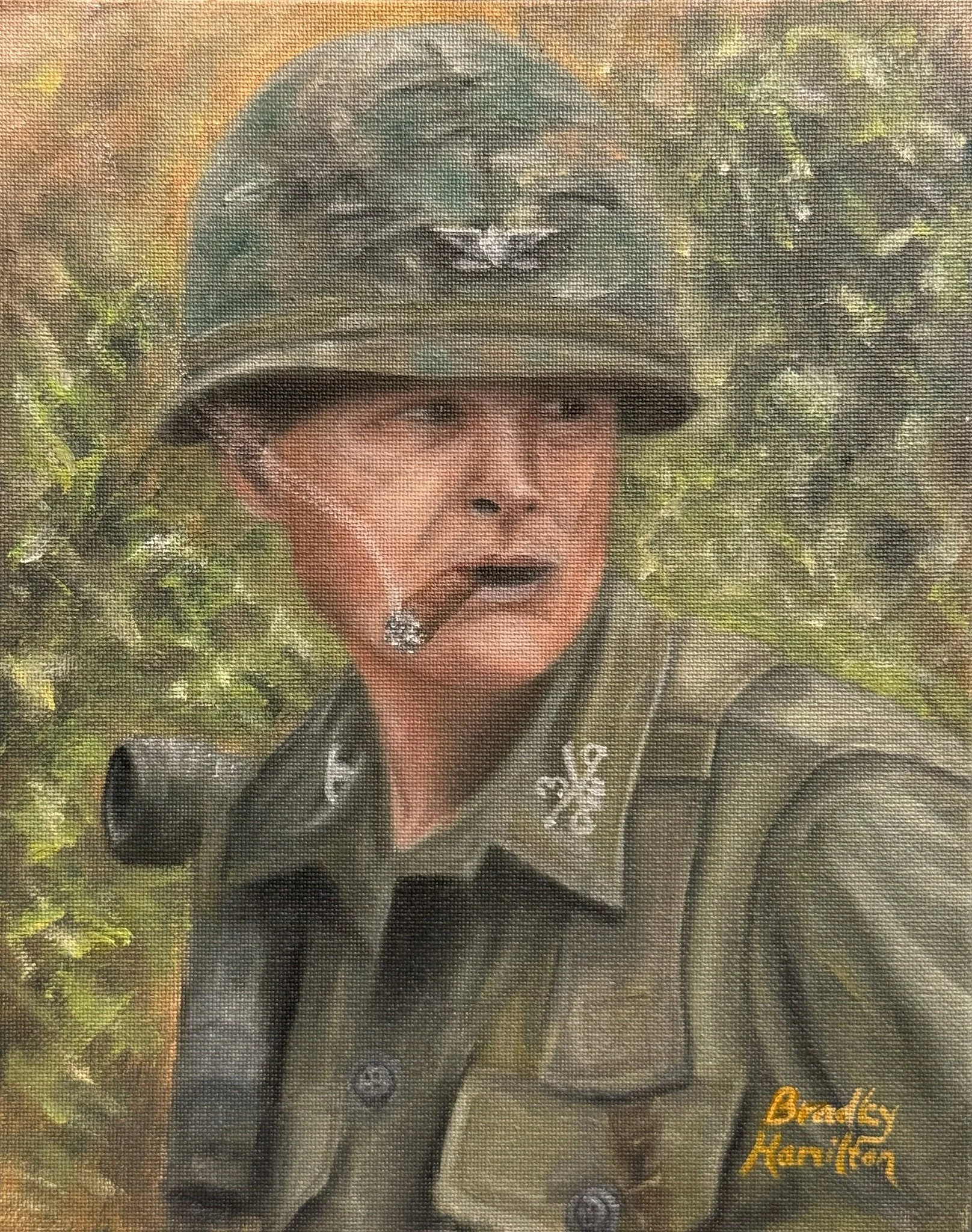Interview
Bradley Hamilton
Bradley’s paintings invite viewers to pause and reflect on the moments that connect us—to each other, to nature, and to ourselves. Blending realism and impressionism, he uses light, color, and texture to evoke a sense of longing, gratitude, and hope. Whether capturing the quiet bond between loved ones or the transformative power of a wild landscape, Bradley’s work seeks to create a sanctuary where viewers can feel seen, remember what matters, and imagine new possibilities for connection and healing.
His explores the beauty and complexity of human connection, emotional longing, and the search for belonging. His work often centers on intimate moments—an embrace, a watchful gaze, a solitary figure moving toward the light—set against the backdrop of nature’s quiet power. Through a fusion of realism and impressionism, Bradley aims to capture not just what is seen but what is felt: the gratitude for fleeting moments, the hope that emerges from darkness, and the comfort found in shared experience. Each piece is an invitation for viewers to see themselves within the story, reflect on their own journey, and discover a sense of sanctuary and meaning. His art connects those quiet, powerful moments that remind us we are not alone. Bradley paints scenes of people, animals, and nature that encourage viewers to pause, reflect, and perhaps see a bit of their own story. His work blends realism and impressionism to create pieces that feel both familiar and dreamlike, always inspired by the hope of bringing gratitude, hope, and belonging to those who experience them. Ultimately, Bradley creates paintings that explore connection, longing, and the beauty of life’s most meaningful moments through a delicate balance of artistic styles.
What is your background and how did you start your journey in the art world?
“I have always been a hands on creator. In high school, I won awards in pottery and woodworking. After graduating in 1986, I enlisted in the United States Army and spent eight years serving as a Ranger, Long Range Reconnaissance Patrol, Airborne, Air Assault, and Sniper qualified soldier. That experience taught me discipline, focus, and how to complete the mission. These values now guide every painting I create. After military life, I focused on raising four children and built a successful career in technology. But in 2014, something deeper called me back to art. I started with a lion painting I followed from a YouTube video. It lit a fire I could not ignore. I later trained under the late Leonid Afremov, learning palette knife techniques and developing a style grounded in realism and emotion. In 2017, life shifted. After my divorce, I regrouped and took time to rediscover my purpose. By 2021, I was back at the easel with more clarity and intention than ever before. In 2024, I began training at the Milan Art Institute and completed the Evolve Artist Realism Foundations program in 2025, refining both my technique and vision. What I paint and what my paintings are about connection. They honor people, places, and principles. I work to capture emotion, movement, and meaning whether it is a tribute to service, a peaceful moment in nature, or the rhythm of everyday life.”
What inspires you?
“Stories of service and sacrifice; military, family, faith, and the courage to keep going inspires me. The quiet poetry of everyday life. Light on simple forms and honest materials also inspire me. Nature, weathered places, and American heritage. Gratitude, second chances, and work done with care.”
What themes do you pursue? Is there an underlying message in your work?
“I paint to make something matter. My work in narrative realism and impressionistic realism explores connection, longing, and gratitude. I use light, color, and atmosphere to invite reflection on what endures: love, service, and the quiet places where hope returns. Nature is both subject and companion in these stories. Whether a sleeping pup, a night sky, or the open sea, each scene is a sanctuary for memory and belonging. At the heart of my work is an invitation. To pause, reflect, and connect both with oneself and with others. I encourage viewers to find meaning in the quiet, in the longing, and in the bonds that sustain us. My art suggests that even in solitude or uncertainty, there is hope, beauty, and the possibility of belonging. We are all searching for connection, understanding, and a sense of home whether in another’s eyes, in the embrace of nature, or in the memories we hold dear. Through my blend of realism and impressionism, I offer viewers a sanctuary: a place to feel seen, to remember what matters, and to imagine new possibilities for connection and healing.”
How would you describe your work?
“I create paintings that explore the beauty and complexity of human connection, emotional longing, and the search for belonging. My work often centers on intimate moments, an embrace, a watchful gaze, a solitary figure moving toward the light, set against the backdrop of nature’s quiet power. Through a blend of realism and impressionism, I aim to capture not just what is seen, but what is felt: the gratitude for fleeting moments, the hope that emerges from darkness, and the comfort found in shared experience. Each piece is an invitation for viewers to find themselves within the story, to reflect on their own journey, and to discover a sense of sanctuary and meaning.”
Which artists influence you most?
“John Singer Sargent; known for his masterful realism and expressive brushwork, Sargent’s portraits and figure studies capture both likeness and inner life, much like your focus on emotional connection. Andrew Wyeth’s work is deeply rooted in realism, but always with a sense of longing, solitude, and emotional resonance. His use of light and texture to evoke mood parallels your approach. Edward Hopper’s ability to convey solitude, longing, and the poetry of everyday life through light and composition aligns with your themes of reflection and sanctuary. Leonid Afremov was a Belarusian–Israeli painter best known for his vibrant, colorful palette knife paintings. He worked primarily in oils, creating expressive cityscapes, landscapes, and romantic scenes filled with bold color and dynamic texture. Afremov’s signature style features thick, impasto strokes and a luminous, almost dreamlike quality. Claude Monet and the Impressionists as they focus on atmosphere, fleeting moments, and the transformative power of light is evident in your blend of realism and impressionism. Albert Bierstadt was a nineteenth-century American painter known for his grand, luminous landscapes of the American West. He was part of the Hudson River School and became famous for his dramatic depictions of mountains, valleys, and skies, often painted with meticulous detail and a sense of awe.”
“I create paintings that explore the beauty and complexity of human connection, emotional longing, and the search for belonging.”
What is your creative process like?
“My creative process begins with inspiration, which can come from an emotion, a memory, a story, or a scene that captures my attention. I spend time reflecting on what I want to express and how I want the viewer to feel. Sometimes, I sketch ideas or gather reference images, letting the concept develop in my mind before I start painting. When I begin a piece, I choose materials that best suit the mood and subject, whether that is oil on canvas, acrylics, or mixed media. I often work in layers, building up color, light, and texture gradually. I pay close attention to how the paint moves and responds, allowing for moments of spontaneity and discovery while still guiding the work toward my vision. Throughout the process, I step back frequently to reflect on the painting’s direction and emotional impact. I make adjustments, refine details, and sometimes let the piece rest before returning with fresh eyes. My goal is always to create a painting that not only captures a visual moment but also evokes a sense of connection, gratitude, or hope in the viewer. Each painting is a journey of exploration, balancing intuition with intention, and always seeking to create a space where others can pause, reflect, and find meaning.”
What is an artist’s role in society and how do you see that evolving?
“The role of the artist in society is both timeless, constant, and ever-changing. At its core, I believe the artist is a truth teller, a connector, and a creator of meaning. Artists help people see the world and themselves with new eyes. Through images, stories, and emotions, artists give voice to what is often unspoken, offering sanctuary, hope, and a sense of belonging. In today’s world, the artist’s role is expanding. With so much noise and distraction, artists are needed more than ever to create spaces for reflection, empathy, and connection. Art can challenge assumptions, inspire action, and remind us of our shared humanity. As technology evolves, artists have new tools and platforms to reach people, but the heart of the work remains the same: to move others, to spark conversation, and to help us remember what matters. Looking ahead, I see the artist’s role evolving into that of a guide and a bridge builder. Artists will continue to create beauty and provoke thought, but they will also help communities heal, foster dialogue across divides, and imagine new possibilities for the future. Whether through traditional media or digital innovation, artists will keep shaping culture, offering hope, and reminding us of the power of connection.”
Have you had any noteworthy exhibitions you'd like to share?
“Actually a couple of my oil paintings were displayed at Woody’s Restaurant at the Monterey/Carmel Airport. I have not had any exhibitions but I’ve been visiting many galleries in the Monterey County area recently and looking to get involved in some very soon with my artwork.”




